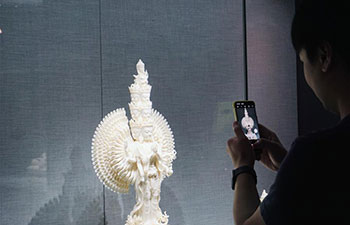BEIJING, Aug. 22 (Xinhua) -- Chinese scientists have conducted experiments on pulsar navigation with an X-ray space telescope, and the technology could be used in future deep space exploration and interplanetary or interstellar travel.
The experiments were conducted on the Hard X-ray Modulation Telescope (HXMT), dubbed Insight, which was sent into space on June 15, 2017, to observe black holes, pulsars and gamma-ray bursts, by scientists from the Institute of High Energy Physics of the Chinese Academy of Sciences.
The positioning accuracy in the experiments reached 10 km, further verifying the feasibility of autonomous navigation of spacecraft by using pulsars, which lays a foundation for future practical application in deep space exploration, said scientists.
The article about the experiments was published in the Astrophysical Journal Supplement on Wednesday.
From August 31 to September 5, 2017, Insight observed the Crab pulsar for about five days to test the feasibility of pulsar navigation. The research team had also proposed an algorithm for X-ray pulsar navigation, according to Zhang Shuangnan, lead scientist of the Insight space telescope.
The research team further improved the algorithm and applied it in the processing of the observation data of the three detectors onboard Insight. The satellite's orbit was determined successfully, with the positioning accuracy within 10 km, comparable to that of a similar experiment conducted on the International Space Station, Zhang said.
To test the feasibility and reliability of the algorithm, the research team has carried out theoretical analysis and simulation verification with various types of pulsars. Their results show that the method works for different pulsars.
The reviewer for the Astrophysical Journal commented that "the flight demonstrations from the Insight-HXMT satellite are important contributions to the development of X-ray navigation."
Insight-HXMT is China's first X-ray astronomical satellite with a designed lifespan of four years.
China has also conducted a pulsar navigation test on the Tiangong-2 space lab and launched a pulsar navigation experiment satellite in 2016.

















